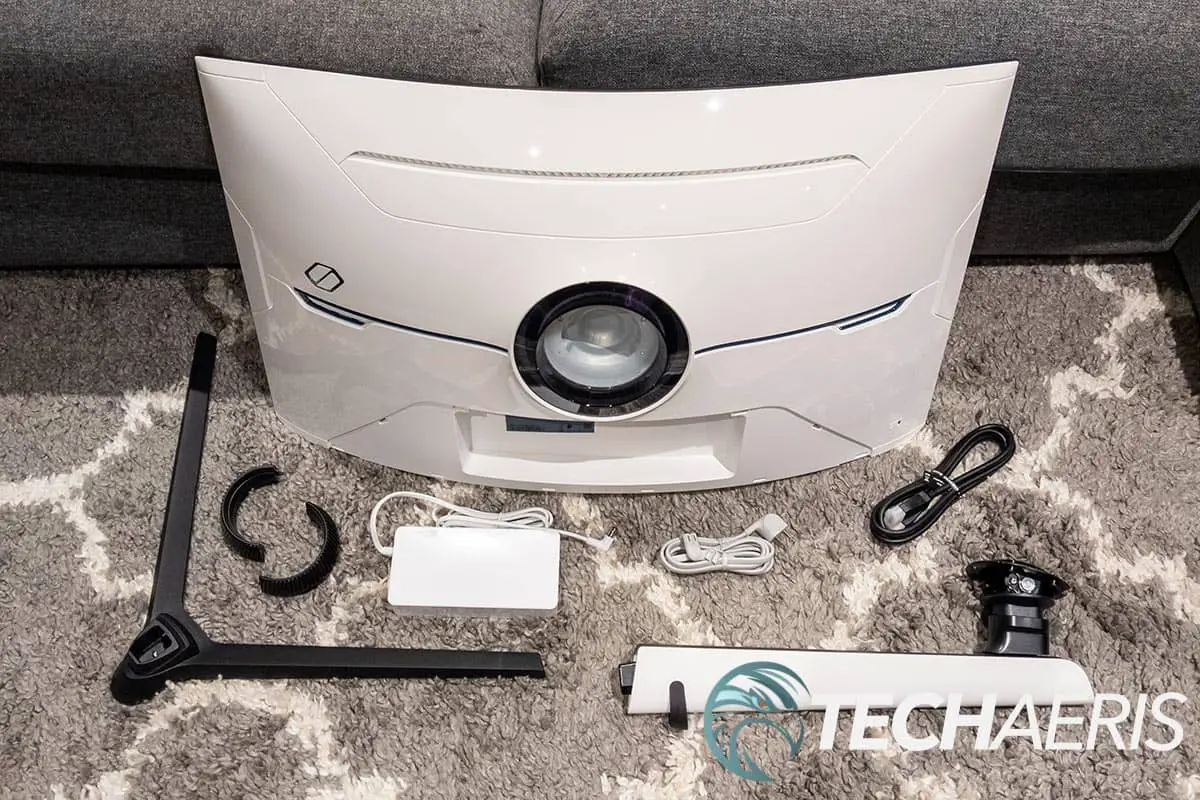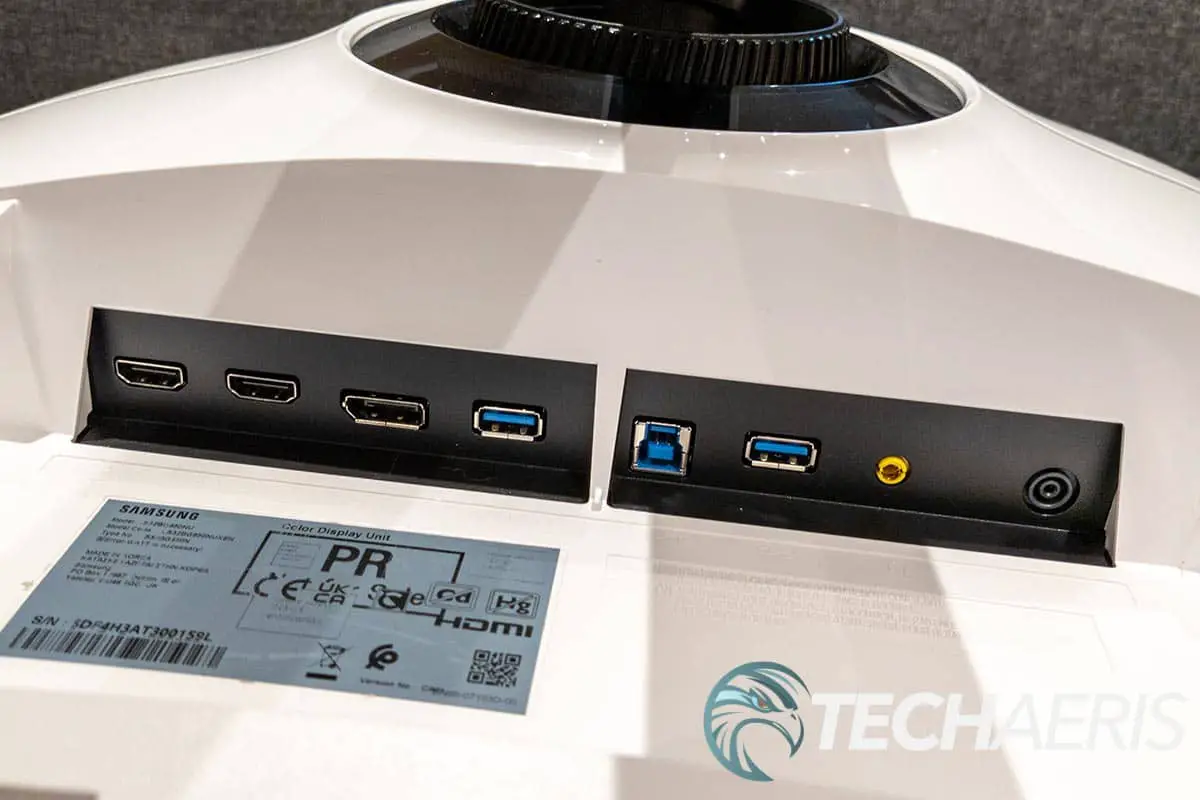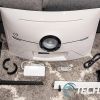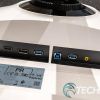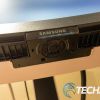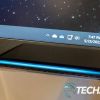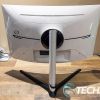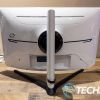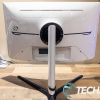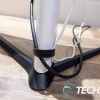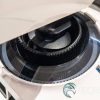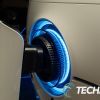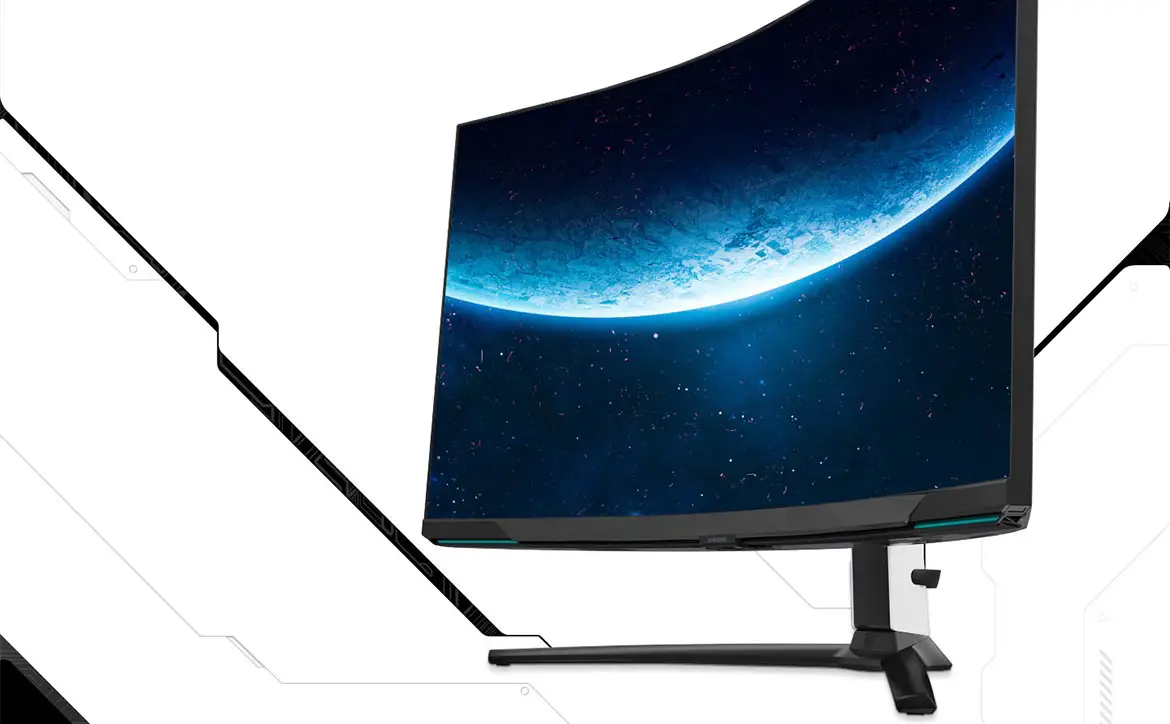
Over the past few years, we’ve been fortunate enough here at Techaeris to take a first look at some of Samsung’s upcoming products, including gaming monitors. While the Samsung Odyssey G9 and Neo G9 are fantastic ultra-widescreen gaming monitors, not everyone wants or has the room for, something as large.
Estimated reading time: 0 minutes
Our Samsung Odyssey Neo G8 review looks at a 32-inch 4K HDR curved gaming monitor with a 240Hz refresh rate for gamers who want both quality and speed. Read on for our full review!
Table of contents
Specifications
| Model | LS32BG850N |
| Screen Size | 32” Curved |
| Display Type | Mini LED QLED |
| Panel Type | VA |
| Aspect Ratio | 16:9 |
| Max Resolution | 3840×2160 |
| Curvature | 1000R |
| PPI | 139.87 |
| Brightness | 350 cd/m2 (typ), 1,000 cd/m2 (peak), 2000 cd/m2 (Quantum HDR peak) |
| HDR | Quantum HDR 2000, HDR10+, HDR10+ gaming |
| Dimming Zone | Over 1,000 zone local dimming |
| Contrast Ratio | 1,000,000:1 |
| Picture Mode | Custom/FPS/RTS/RPG/Sports/sRGB/Cinema/Dynamic Contrast |
| Viewing Angle | 178°(H)/178°(V) |
| Tilt | -9.0º(± 2°) ~ 13.0º(± 2°) |
| Swivel | -15.0º ~ 15.0º |
| Height Adjustment (distance) | 120.0mm ±5.0 |
| Response Time | 1ms (GTG) |
| Refresh Rate | 120/240Hz |
| Display Colors | Max 1B |
| Color Gamut | 95% DCI-P3 (typical) |
| FreeSync | FreeSync Premium Pro |
| Variable Refresh Rate | Adaptive VRR capable |
| TUV | Low Blue Light/ Flicker-free/Eye comfort 1000R |
| Backlight Type | Quantum Mini LED |
| Inputs/Outputs | 1x DisplayPort 1.4, 2x HDMI 2.1, 3.5mm headphone, USB Hub, 2x USB-A, power |
| Power Consumption | 40.8W (Typical) |
| Power Supply Type | External |
| VESA Wall Mount | 100 x 100mm |
| Dimensions (with stand) | 713.0 x 606.4 x 311.1mm |
| Dimensions (without stand) | 713.0 x 434.8 x 173.0mm |
| Weight (with stand) | 8.9Kg |
| Weight (without stand) | 7.0Kg |
| Additional Features | Eco light sensor, Picture-in-picture, Eye Saver Mode, Flicker Free, Off Timer Plus, USB Firmware Update, Auto Source Switch+, Adaptive Picture, Black Equalizer, Low Input Lag Mode, Virtual AIM Point, Super Arena Gaming UX, Lighting, CoreSync, Ultrawide Game View (3840×1600@120Hz), User Customized Key, Black Frame Insertion, Ana-Dimming, 5-way Function Key |
| MSRP | US$1,499 |
What’s in the box
- Samsung Odyssey Neo G8 32” 4K HDR 240Hz gaming monitor
- Monitor stand
- Power cable with 140W/20.0V power brick
- Infinity Core Lighting ring
- DisplayPort cable
- USB-B to USB-A cable
Design
I like the look of the Samsung Odyssey G9 series, and the G8 follows those design cues almost to the letter. Being a 32-inch 4K HDR curved gaming monitor, it is quite a bit smaller. It does feature the same 1000R curvature as its larger siblings, matching close to that of the human eye. Measuring just over 28-inches wide and 23.85-inches in height, it is 12.25-inches in depth (with the stand). If you are going to VESA mount it, it is about 6.81-inches in depth without the stand.
As for the stand, the legs are your typical V-shaped configuration. The stand attaches to the legs by way of a single screw. The stand is sheathed in white and has a rubber-like cable management tab towards the bottom. Unlike the G9-series which allows the cables to be fed through the inside of the stand, it doesn’t look as tidy. In addition, the stand legs lay flat on your desk so you cannot feed your keyboard, mouse, or other cables underneath them for a tidy look. The stand is angle, tilt, pivot, and height-adjustable, allowing you to adjust it to your desired height. All told, you get 4.72-inches of height adjustment with the Neo G8 gaming monitor.
The front of the monitor has relatively small black bezels on the top and sides and a slightly larger one on the bottom. The physical bezels on the top and sides are about 1/8″ thick, bumping up to 3/8″ with the virtual screen bezel. The bottom bezel is mostly physical at just over an inch thick. On the left and right sides are two thin LED strips that are 3 3/4-inches in length. These can be toggled on or off along with the rear Infinity Core Lighting ring to add a touch of colour to your setup. Centered underneath the monitor is a small piece with the Samsung logo (presumably for the adaptive picture feature). Located underneath this is the power/menu toggle button, centered between four buttons. These buttons have a nice rubbery finish to them but differ from the single menu/power button on the G9-series. While functional, I much prefer the single button/toggle on the G9.
Like the other Samsung Odyssey monitors, the back of the Odyssey Neo G8 is bright white. It has some vents along the top, as well as some sleek cutouts going across the middle. The Odyssey logo is located near the left side (when looking at the back). The Infinity Core Lighting ring is centered on the back of the monitor around the top of the stand and has a dark ring around it to help diffuse the light. The glow is relatively soft when enabled and does not reflect much off a wall if your desk is set against one. If visible, it does add a nice touch to the monitor.
Underneath the Infinity Core is where you will find the recessed ports. Like most monitors these days, the ports are facing down, so your cables feed into them from the bottom up. When facing the back, from left to right, you will find two HDMI 2.1 ports, a DisplayPort 1.4, a USB-A port, a USB-B hub port, another USB-A port, a 3.5mm headphone jack, and a small round power adapter port.
Display
As mentioned before, the display on the 32-inch Samsung Odyssey Neo G8 4K has a curvature of 1000R, which matches the human eye. Among other things, this reduces eye strain as your eye does not have to refocus when scanning the edges of the screen. Typically, I’m not a fan of 1000R on smaller monitors, but the more I use 32-inch curved monitors, it is more than acceptable at this size (and larger).
The display on the Samsung Odyssey Neo G8 features the same Mini LED QLED technology as the Neo G9 and some of the company’s TV offerings. With a 350 nits typical brightness, the monitor does peak at 2000 nits when the Quantum HDR is enabled. Again, the VESA DisplayHDR Test app from the Microsoft Store confirmed these brightness levels, at least as far as my naked eye is concerned.
Like the Neo G9, the colours on the Quantum Mini LED panel also seemed slightly less saturated than non-Mini LED panels but are still fantastic. With over 1.07 billion colours, 95% DCI coverage, 1,000,000:1 native contrast ratio and over 1000 local dimming zones, the Neo G8 offers up a fantastic picture. While not as immersive as the ultra-widescreen gaming monitors, the tradeoff for 4K gaming was worth it — depending on what game I played.
You will need a monster of a machine to game at 4K and hit the 240fps that 240Hz monitors sync to. I will hit on that more in the performance section. At any rate, 4K HDR graphics in Forza Horizon 5 and Call of Duty: Warzone (my two main test games) were crisp and clear and easily added to the gaming experience. To be honest, it is a tough call between going for a wider, more immersive experience or a crisper experience.
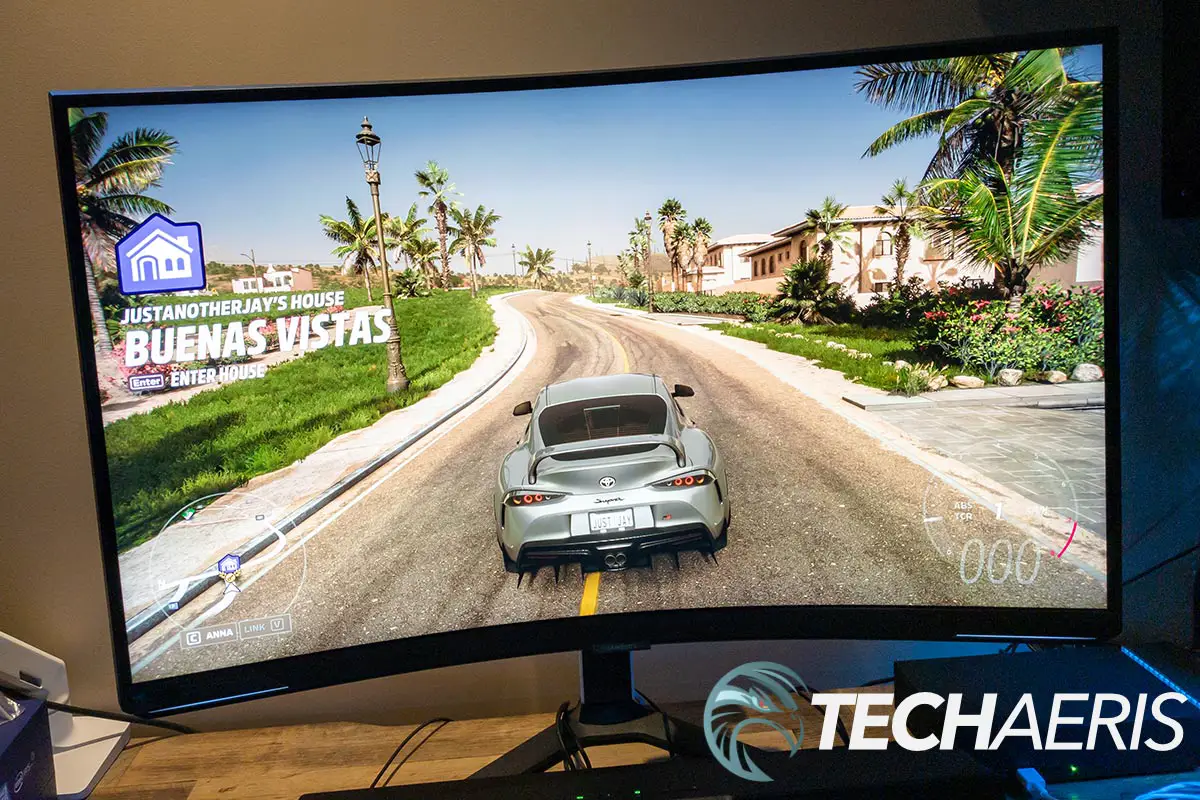
As with any decent monitor, there are quite a few settings that you can customize to your liking. To access the onscreen menu, press the power button toggle on the underside of the monitor. It will bring up a menu panel with four options. Selecting the up button will allow you to access the menu. Selecting the left button will switch inputs, selecting the right button will toggle PIP mode, and selecting the bottom button will power the monitor off. The current Black Equalizer, Response Time, Refresh Rate, Adaptive Sync, Low Input Lag, and current Picture Mode are displayed along the top when accessing the menu.
Monitor settings that you can adjust include:
- Game: Refresh Rate (120 or 240Hz), Response Time, Adaptive-Sync, Ultrawide Gaming View, Low Input Lag, Black Equalizer, Virtual Aim Point, Infinity Core Lighting (Lighting On/Off, Light Effect (Static, Rainbow, Flash, Double Flash, Breathing), Color, CoreSync), Screen Size
- Picture: Picture Mode (Custom, FPS, RTS, RPG, Sports, sRGB, Cinema, Dynamic Contrast), Brightness, Contrast, Sharpness, Color, Black Level, Eye Saver Mode, Screen Adjustment, Calibration Report OR HDR Dynamic, HDR Standard when HDR is enabled in Windows
- PIP: PIP Mode (On/Off), Screen Size, Screen Position, Source, Sound Source, Screen Ratio, Contrast
- OnScreen Display: Language, Display Time
- System: Local Dimming, Volume, Dynamic Brightness, Off Timer Plus, PC/AV Mode, DisplayPort Ver., Input Port Ver., Auto Source Switch+
- Support: Self Diagnosis, Software Update, Information, Register Product, Reset All
As you can see, there are plenty of different options to customize the monitors’ functionality and display. While I did toggle through the different Picture Mode settings, I settled on sRGB with a reduction in the brightness and was pleased with the “out-of-the-box” display settings for typical use and gaming.
The monitor does support HDR as well. As mentioned before, HDR is still hit and miss in Windows. When enabled for day-to-day tasks like web browsing or word processing, colours are muted and much darker by default. With Dynamic HDR mode enabled on the Odyssey Neo G8, however, Windows was actually usable with HDR on full time due to the increased brightness. When gaming, games like Forza Horizon 5 and Call of Duty: Warzone that have native HDR support were that much more immersive and the colours that much more impressive. When connected to the Xbox Series X, the HDR mode kicked in just fine.
Like the Odyssey Neo G9, the Mini LED QLED display on the Odyssey Neo G8 was amazing, especially considering the bump to 4K resolution with 240Hz refresh rate support.
Assembly
Setting up the Samsung Odyssey Neo G8 is easy. Attach the legs to the main stand and tighten the screw on the bottom of the legs. Next, the top of the arm slides into the back of the monitor and is screwed into place with four screws (you will need a screwdriver for that). Finally, the translucent core ring splits in two and snaps in place around where the monitor attaches to the arm. All said and done, you should be up and running with your new monitor in no time once you have unpacked it from the box.
Performance
If you are a gamer, you know that you need a beefy system to hit 240fps on a 4K monitor. My test machine boasted a 12th Generation Intel® Core™ i9-12900K processor with liquid cooling, 2 TB PCIe® NVMe™ M.2 Solid State Drive, NVIDIA® GeForce RTX™ 3090 graphics card with 24 GB GDDR6X dedicated memory, and HyperX® 64 GB DDR4-3733 MHz XMP Heatsink RAM. With that machine, here are a few games I tested with in-game benchmarks set to 4K on their highest quality settings. I also dropped the resolution down to QHD and FHD settings for comparison.
| FHD | QHD | 4K UHD | |
| Call of Duty: Warzone | 178 fps | 153 fps | 98 fps |
| Dirt 5 | 162 fps | 138 fps | 94 fps |
| Forza Horizon 4 | 226 fps | 210 fps | 160 fps |
| Forza Horizon 5 | 120 fps | 107 fps | 81 fps |
| Gears Tactics | 190 fps | 139 fps | 76 fps |
| Heroes of the Storm | 300 fps | 260 fps | 200 fps |
| Middle-Earth: Shadow of War | 208 fps | 173 fps | 136 fps |
| Tomb Raider | 425 fps | 299 fps | 156 fps |
| Wolfenstein: Youngblood (Riverside) | 263 fps | 213 fps | 172 fps |
| Wolfenstein: Youngblood (Lab X) | 179 fps | 181 fps | 175 fps |
| World War Z (with Vulkan enabled) | 324 fps | 242 fps | 133 fps |
As you can see, even with a pretty beefy machine, you will be hard-pressed to hit 240fps on high-quality settings at 4K UHD resolution. You can adjust your graphics in most games to hit that and still have decent graphics quality at that resolution. Still, running Warzone at 98fps at 4K was decent enough for my casual play, and higher framerates like 160fps in Forza Horizon 5 made for extra smooth gameplay with no stuttering or tearing.
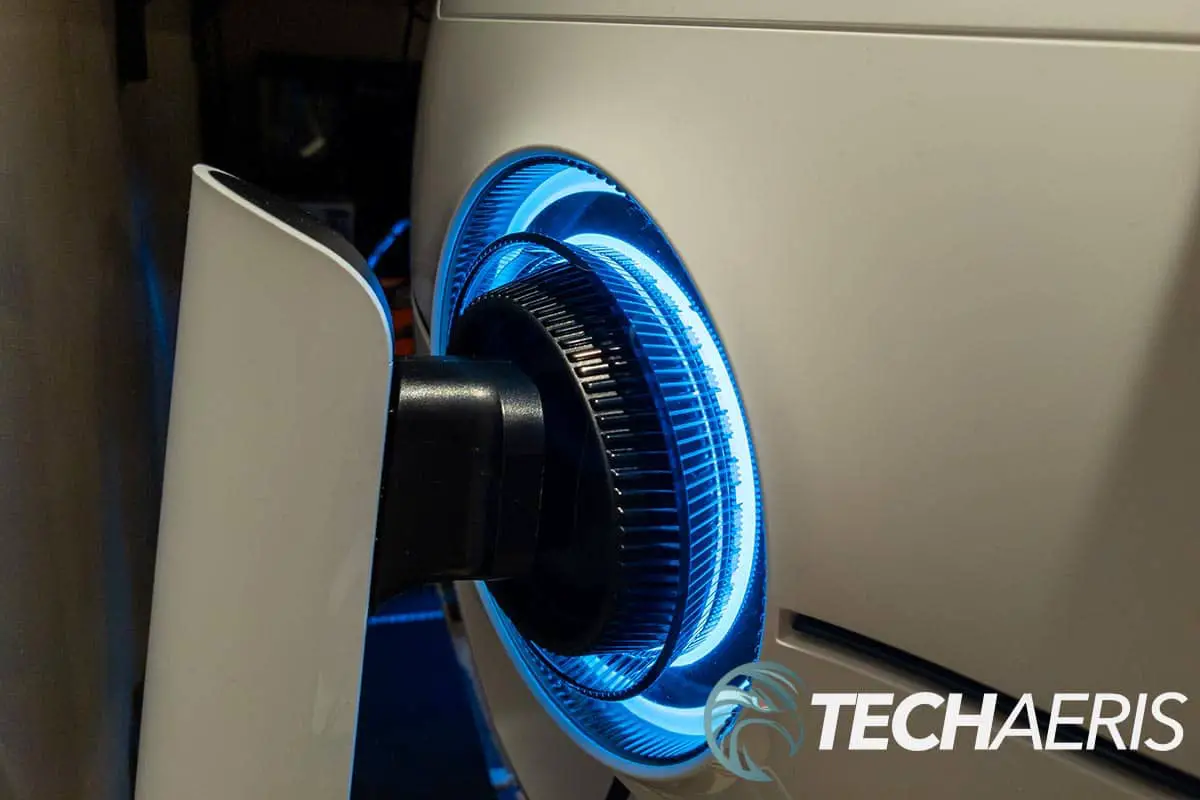
The monitor also supports FreeSync Premium Pro and adaptive VRR capability for smoother gameplay. On that note, being able to set the maximum refresh rate to 120 and hooking my Xbox Series X up to the HDMI 2.1 port made for some sweet, smooth Xbox gaming at 4K.
While a gaming monitor, the 4K resolution was also nice for photo and video editing, although you are limited here with the 95% DCI-P3 colour profile as Samsung makes no mention of other colour profile coverage rates. However, being a similar panel to the Neo G9, I would suspect you would see similar coverage as that monitor which includes 88% NTSC, 125% sRGB, and 92% Adobe RGB colour coverage.
Price/Value
Like the Odyssey Neo G9 before it, the Samsung Odyssey Neo G8 with its Quantum Mini LED display will set you back a pretty penny. With a retail price of US$1499.99, it is a bit of a hard sell. That being said, if you have a machine that can hit closer to 240fps at 4K resolution, you’ve already likely dropped a wad of cash on your gaming rig.
Photo Gallery
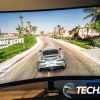
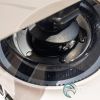
Wrap-up
There is no question that the Samsung Odyssey Neo G8 4K HDR Mini LED gaming monitor offers up a fantastic picture and a high refresh rate. If you have a system and the budget to handle it, you won’t be disappointed. Given its Quantum Mini LED panel, high resolution, and high refresh rate, the world’s first 32″ 4K 240Hz gaming monitor is an easy Top Pick of 2022 here at Techaeris.
In some of our articles and especially in our reviews, you will find Amazon or other affiliate links. As Amazon Associates, we earn from qualifying purchases. Any other purchases you make through these links often result in a small amount being earned for the site and/or our writers. Techaeris often covers brand press releases. Doing this does not constitute an endorsement of any product or service by Techaeris. We provide the press release information for our audience to be informed and make their own decision on a purchase or not. Only our reviews are an endorsement or lack thereof. For more information, you can read our full disclaimer.
Last Updated on March 20, 2023.

